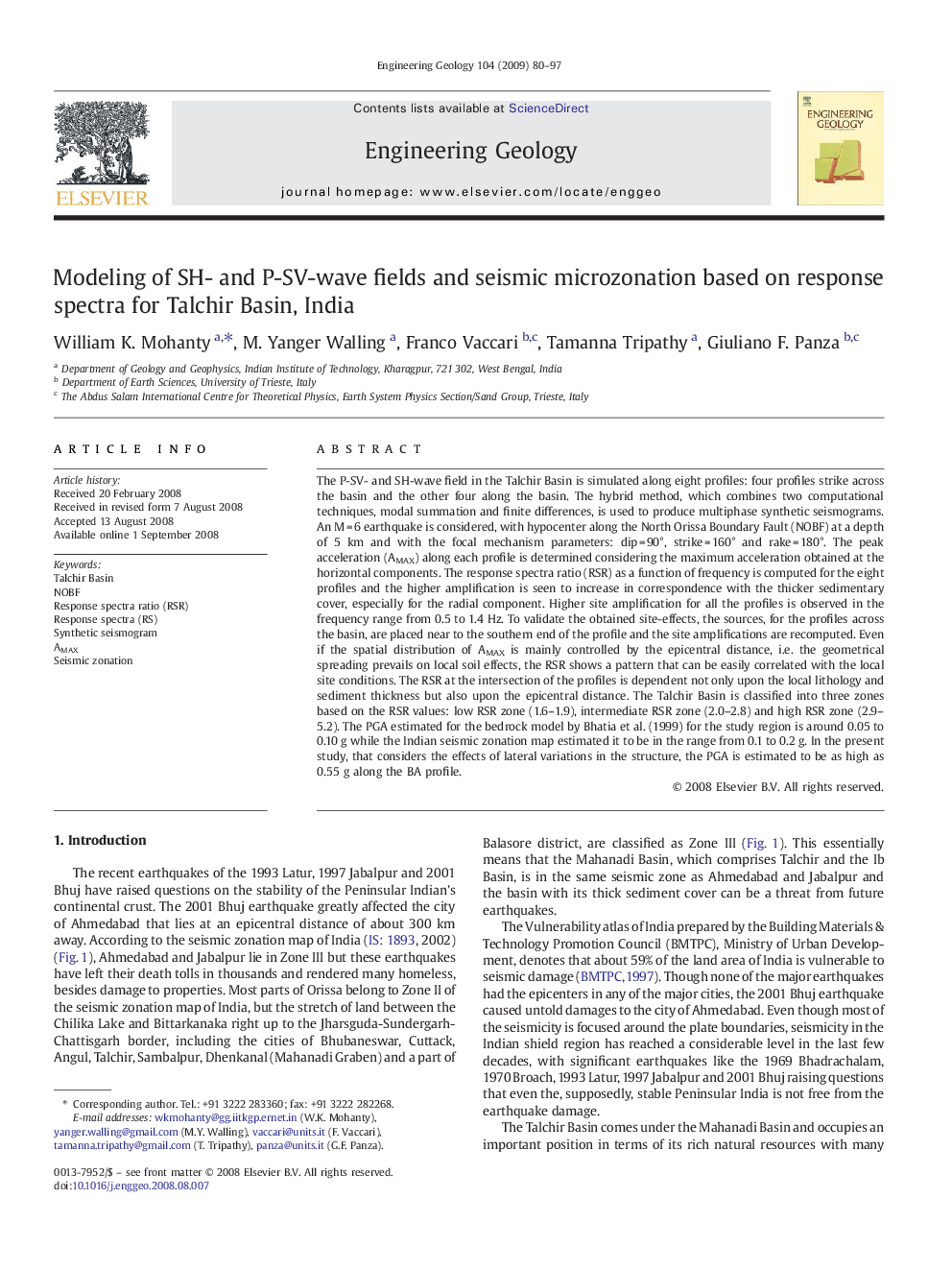| کد مقاله | کد نشریه | سال انتشار | مقاله انگلیسی | نسخه تمام متن |
|---|---|---|---|---|
| 4744812 | 1641883 | 2009 | 18 صفحه PDF | دانلود رایگان |

The P-SV- and SH-wave field in the Talchir Basin is simulated along eight profiles: four profiles strike across the basin and the other four along the basin. The hybrid method, which combines two computational techniques, modal summation and finite differences, is used to produce multiphase synthetic seismograms. An M = 6 earthquake is considered, with hypocenter along the North Orissa Boundary Fault (NOBF) at a depth of 5 km and with the focal mechanism parameters: dip = 90°, strike = 160° and rake = 180°. The peak acceleration (AMAX) along each profile is determined considering the maximum acceleration obtained at the horizontal components. The response spectra ratio (RSR) as a function of frequency is computed for the eight profiles and the higher amplification is seen to increase in correspondence with the thicker sedimentary cover, especially for the radial component. Higher site amplification for all the profiles is observed in the frequency range from 0.5 to 1.4 Hz. To validate the obtained site-effects, the sources, for the profiles across the basin, are placed near to the southern end of the profile and the site amplifications are recomputed. Even if the spatial distribution of AMAX is mainly controlled by the epicentral distance, i.e. the geometrical spreading prevails on local soil effects, the RSR shows a pattern that can be easily correlated with the local site conditions. The RSR at the intersection of the profiles is dependent not only upon the local lithology and sediment thickness but also upon the epicentral distance. The Talchir Basin is classified into three zones based on the RSR values: low RSR zone (1.6–1.9), intermediate RSR zone (2.0–2.8) and high RSR zone (2.9–5.2). The PGA estimated for the bedrock model by Bhatia et al. (1999) for the study region is around 0.05 to 0.10 g while the Indian seismic zonation map estimated it to be in the range from 0.1 to 0.2 g. In the present study, that considers the effects of lateral variations in the structure, the PGA is estimated to be as high as 0.55 g along the BA profile.
Journal: Engineering Geology - Volume 104, Issues 1–2, 24 February 2009, Pages 80–97